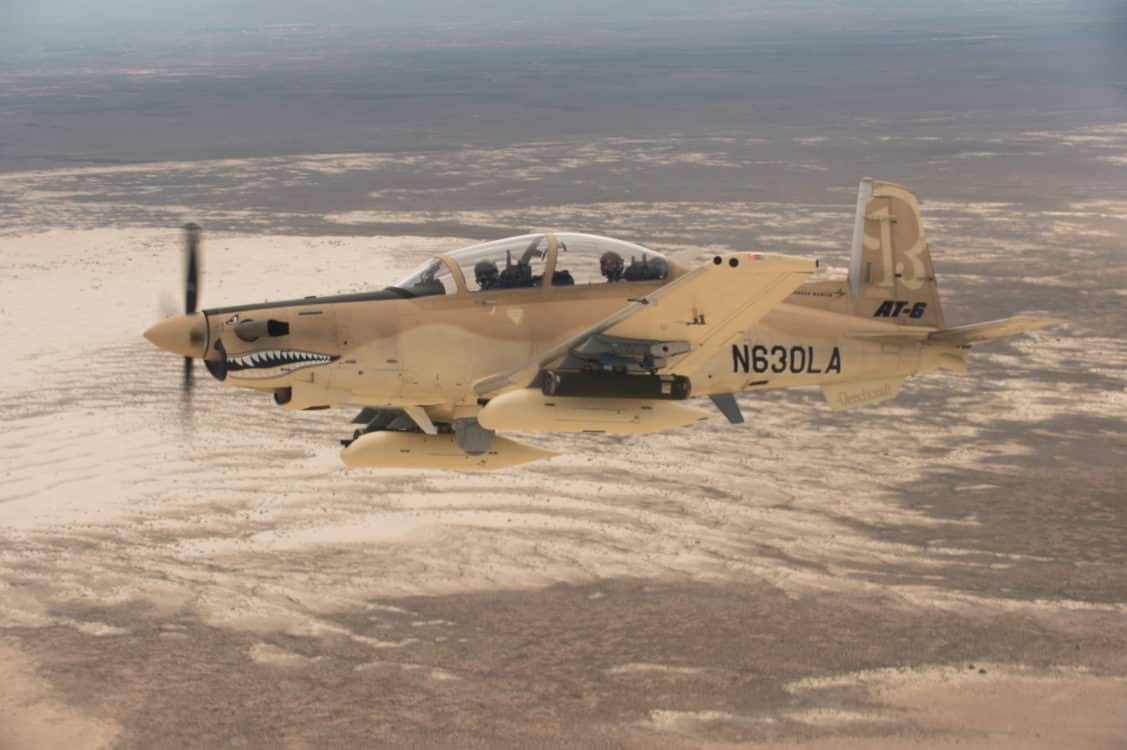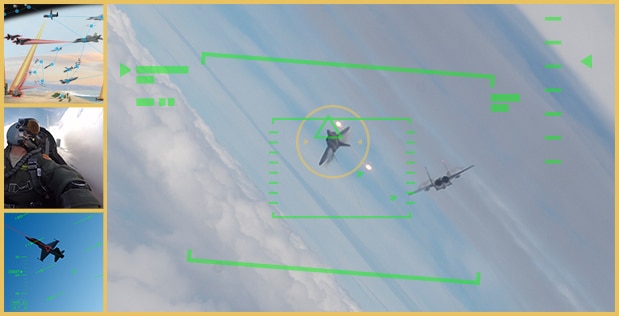To Defeat China, Fighter Jet Speed Is Just as Important as Stealth
As the United States reenters the realm of great power competition, America needs to maintain its technological edge in stealth, but would benefit from a renewed emphasis on speed in combat aviation.
In 2012, a coordinated attack against two separate U.S. installations in Benghazi, Libya came with similarly painful lessons. When the dust settled, four Americans were dead, including two CIA contractors and the U.S. Ambassador to Libya, Christopher Stevens. Like the ambush in Niger, air support for Americans in Libya was too far away to provide any meaningful assistance throughout the majority of the fight.
These two instances were outliers stretched across two decades worth of counter-extremist operations, but they both perfectly demonstrate the very real limitations of American airpower when it comes to distance. Public perception of American airpower is not always congruous with the realities of combat, an issue that extends all the way to partner forces. The assumption among most is that America has all-seeing aircraft flying overhead at all times… but that simply isn’t true.
“Unfortunately, public perception is driven sometimes by news coverage, but also by modern movies,” Dr. James Kiras explained about partner forces in a recent episode of The Irregular Warfare Podcast.
“And the idea that somehow we can’t maintain persistent coverage, that a cloud-for example-moving between you and a target could allow you to lose coverage for a critical period just seems completely inconceivable to them.”
Related: F-35 PILOT: FORGET DRONES, THE SKIES STILL BELONG TO FIGHTER PILOTS
The American people also tend to think that the United States has MQ-9 Reapers or armed F-15E Strike Eagles standing by within firing distance of every military operation–something that has been true to a large extent throughout the past two decades of conflict in Iraq and Afghanistan, where a “stack” of air support platforms are often standing by to engage the enemy. Now, however, as the U.S. repositions assets to better deter Chinese aggression, there will be fewer air platforms to go around in these regions.
At the same time, American special operations forces tasked with fighting or training proxy fighters for conflicts in Africa and the Middle East will be spread out further and operating with less support than ever before in the modern era. Without a new approach to air support, it’s a recipe for Niger or Benghazi-style disasters.

In order to provide real airpower where it’s needed, the United States doesn’t need a fleet of slow and stealthy F-35s standing by on airstrips across friendly African nations–it needs fast air platforms with great fuel range and loitering capabilities that can reach operators in need, provide air support as necessary, and still make it back to an airstrip.
America will also need less advanced platforms that can fly from austere airstrips and travel alongside special operations teams (the Armed Overwatch Program). There are no advanced air defenses to defeat or sneak past in places like Africa. The greatest challenge to overcome then is what’s commonly referred to as “the tyranny of distance.”

Related: DRONES WILL COMPETE WITH CREWED AIRCRAFT FOR AFSOC ARMED OVERWATCH PROGRAM
When isolated elements of American troops are caught at a disadvantage, waiting four hours or more to get an F-16 on station may require a miracle, but waiting more than twice that long for a slow-moving MQ-9 Reaper may be impossible. Worse still, once the fast-moving F-16 does reach the embattled troops, they usually only have about 30 minutes of fuel to burn before having to head back–once again leaving these isolated troops without air support.
Speed has already proven handy in combat in the uncontested airspaces of the Middle East. Two years ago, I interviewed Major “Coyote” Laney, a B-1B pilot instructor from the 28th Bomb Squadron, for Popular Mechanics. He told me a story about one air support mission he flew in which the supersonic bomber’s speed made all the difference.
“I remember in Afghanistan where troops needed help across the entire country and I could go 1.2 Mach all the way there and still have enough gas to hang out when I got there,” Laney explained.
“So you can take a platform that’s on the East side of Afghanistan and 15 or 20 minutes later, I’m showing up when there’s no one else for several hundred miles that could help.”
Of course, the B-1B Lancer is now slated for retirement, with the sub-sonic and stealthy B-21 Raider slated to replace it.
We need stealth to deter China, but we need speed and volume to counter them

We have a bad habit of treating these sorts of discussions like they’re all-or-nothing debates. When the Air Force requests funding for new F-15s, lawmakers and the public together cry foul at the idea of spending money on old jets that lack the stealth they’d need to survive a fight against China or Russia. Then, when the Air Force uses stealthy F-22s to conduct airstrikes against targets in uncontested airspace over places like Afghanistan, lawmakers and the public again cry foul over the high cost of using a stealth fighter for such a simple job. We can’t have it both ways, but we do need both jets.
America needs platforms like the F-35 and forthcoming Next Generation Air Dominance fighter to win the wars of tomorrow, and importantly, to deter them today, but we can’t let our American preference for only the newest and best platforms unduly influence the composition of our military forces. In a perfect world, the United States wouldn’t need any fighter jets. In an almost perfect world, the U.S. could afford to operate massive fleets of stealth fighters for each and every job. But in the decidedly imperfect world we live in, we’re often stuck choosing between capability and capacity. Do we want the best jets we can build or enough jets to meet our mission requirements?

Related: WHY IS AMERICA BUYING THE F-15EX INSTEAD OF MORE F-35S?
While not exactly like the last Cold War, this new Sino-American Cold War possesses a similar capacity for proxy conflicts, and because these conflicts are likely to play out over the massive landmass of Africa as well as the Middle East, finding a way to get air support to far-flung troops quickly will undoubtedly save American lives.
But it won’t just be enough to field fast aircraft. They’ll also have to be cheap enough to be built in the sort of volume that would be required to overcome that tyranny of distance. With enough fast and cheap air support platforms spread throughout the continent, getting air support to special operations troops in Africa could shift from practically impossible to just another day at the office, or as close to that as one can come in combat.
Re-learning that dogfighting isn’t dead

While there’s a much higher likelihood that the United States will find itself supporting proxy or partner forces in the developing world with interests that run counter to China’s or Russia’s, there remains the possibility that this new “Cold War” could boil over into a hot one. The implications of such a conflict would be massive, and even attempting an analysis of just the air war that would unfold would take a book in itself–but as this discussion pertains to tactical aircraft and speed, this is another place the U.S. needs more power under the hood.
If you talk to most modern fighter pilots, they’ll tell you that the days of dogfighting are over, thanks to the development of over-the-horizon weapons and advanced sensor suites that will allow pilots in America’s most advanced jets to target inbound fighters before their pilots even know there’s trouble brewing.
Ward Carroll, famed journalist, author, and former U.S. Navy F-14 Tomcat RIO (Radar Intercept Officer) has heard the contemporary arguments about dogfights being a thing of the past and warns about making assumptions amid a decades-long era of uncontested flight operations, especially in aircraft that aren’t fast enough to escape a pursuing fighter.

“We get too liquored up on the technology and we start to forget what happens when it gets messy. You can run out of a squadron of F-35s in short order,” Carroll told Sandboxx News.
“I get F-35 guys who are like, ‘you just don’t get modern battles anymore.’ No, I think I do. I think you’re not remembering the lessons of serious roll your sleeves up, get your nose bloodied warfare.”
The idea that dogfighting is dead has been informed not only by two decades worth of counter-terror operations against enemy forces with no airpower, but it also carries an uncomfortable similarity to the line of thinking that dominated air war conversations leading into Vietnam. The U.S. believed the days of dogfighting in close quarters were over, so they fielded fast-moving F-4s armed with air-to-air missiles that weren’t nearly as effective as they were intended… and no guns for fighting in close quarters.

